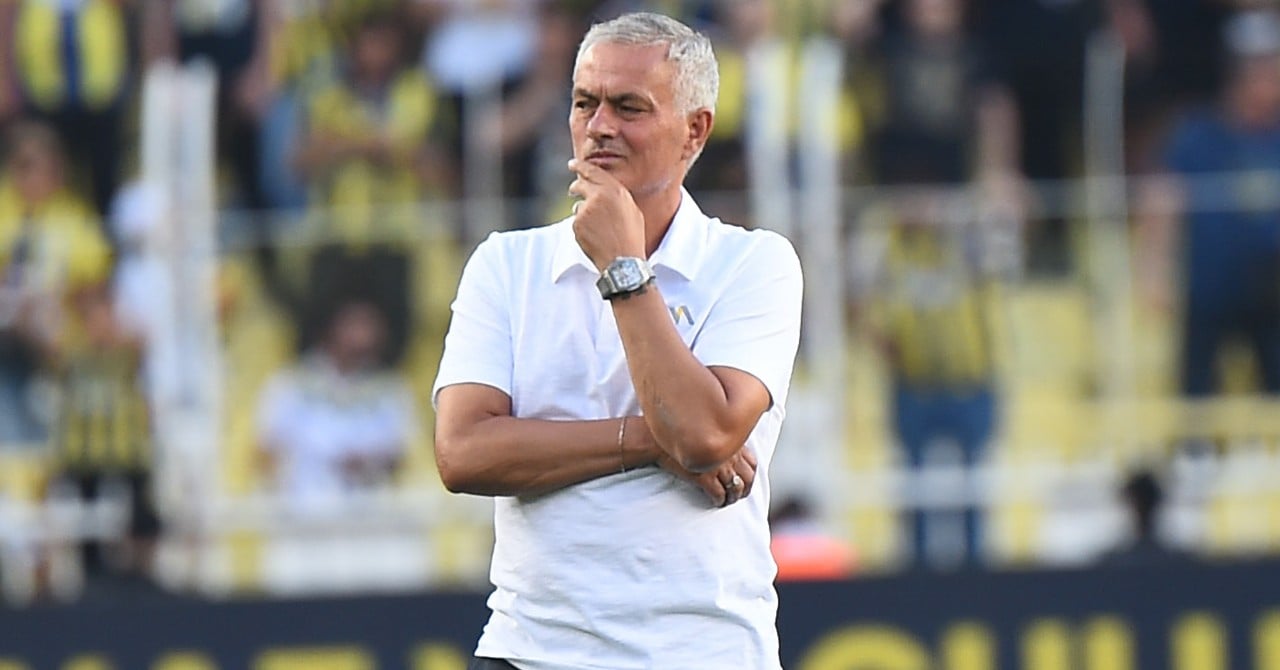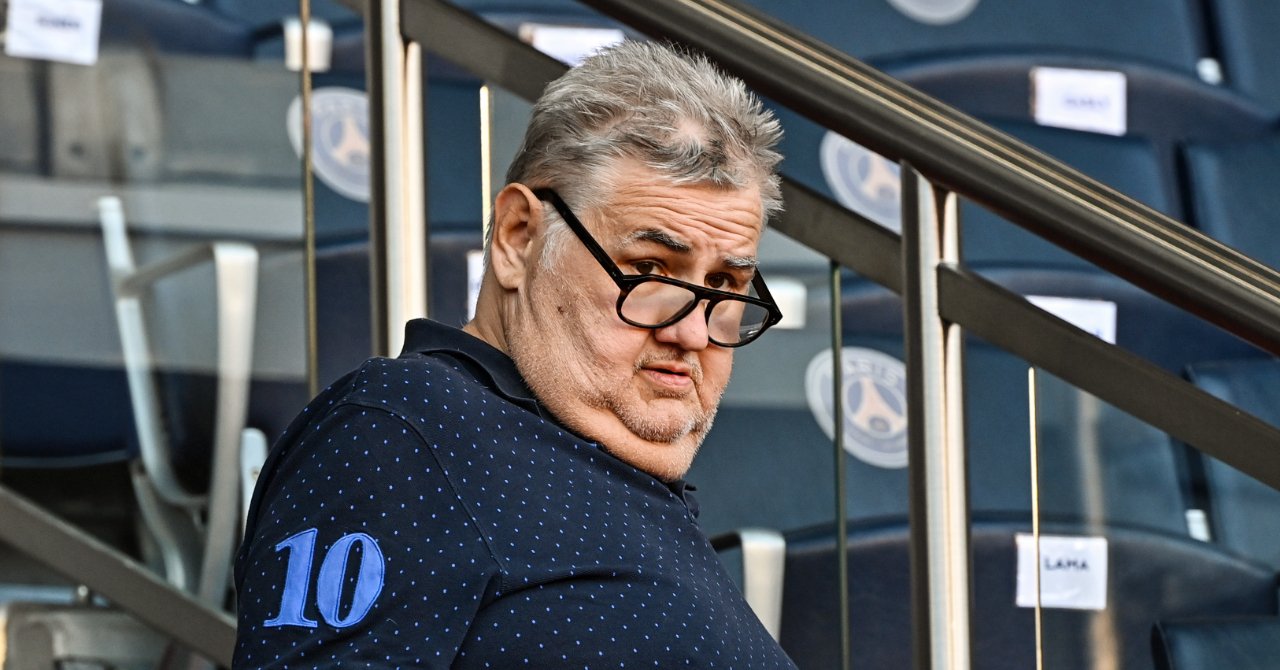ARTICLE AD
The 2024/2025 Champions League play-offs end this Wednesday evening and Lille are notably involved. After their 2-0 victory against Slavia Prague, the Dogues will try to validate their ticket on the Czech side. The opportunity to be among the 36 qualified, because yes, first novelty, this 70th edition brings an expansion of 4 additional teams compared to the 32 teams previously involved. Arranged in 4 pots of 9 teams, the different clubs will not be divided into 9 groups, but only one with the appearance of the Swiss formula. It will be a single championship bringing together the 36 teams involved where the first 8 will be directly qualified for the round of 16. As for the 16 teams placed between 9th and 24th place, they will face each other in a two-legged play-off (9th against 24th, 10th against 23rd, 11th against 22nd, etc.) where the winner will join the other 8 round of 16 teams. Finally, the last 12 teams placed between 25th and 36th place will be eliminated. There will therefore no longer be any teams transferred from the Champions League to the Europa League or the Europa Conference League as before.
The draw
Who says 36 teams, does not mean 35 matches fortunately, the clubs involved will therefore not meet all the teams. There will be 8 days between September 17 and January 29, which means that the group stage will continue after the winter break. On the other hand, to define these teams, the draw will be different than usual. If the ceremony will take place this Thursday at 6 p.m., the day after the play-offs and as is often the case with Monaco, changes have been made. The teams will be in different pots and balls will be drawn. However, a full draw would last 3 to 4 hours and UEFA has opted for a hybrid solution with the use of artificial intelligence. Each time a team is drawn, the computer will designate the 8 opponents of this team (4 at home and 4 away). There will be two opponents per pot in each draw.
For example, the title holder, Real Madrid, who is in pot 1, could come up against Paris Saint-Germain and Liverpool from pot 1, Bayer Leverkusen and AC Milan from pot 2, PSV Eindhoven and Celtic Glasgow from pot 3, as well as Bologna and Brest in pot 4. Some subtleties are to be expected, such as a team cannot meet opponents from the same country. We will therefore not be entitled to Paris Saint-Germain – Monaco or Lille – Brest. It will also be impossible to meet more than two teams from the same country. Let’s imagine that Paris Saint-Germain faces Borussia Dortmund and RB Leipzig in pot 1, the Parisian club will therefore not be able to find itself facing Bayer Leverkusen in pot 2 or Stuttgart in pot 4. For the Europa League and the Europa Conference League, the same format will be used for the group stage. This draw model only concerns the group stage, because for the knockout matches, we will only find the traditional balls. A full draw will be held for the round of 16 and we will thus know the tree structure of the matches until the final.
Heavy stuff for French clubs?
For the moment, we know 32 of the 36 participants in the draw, but we can already have an idea of what the French clubs will be facing. Whatever a team’s pot, whether it’s 1 for Paris Saint-Germain, 4 for Monaco and Brest or 3 if Lille qualifies, the draw will not grant it any special privilege. So each team can come up against the heavyweights with Manchester City and Real Madrid in Pot 1, Bayer Leverkusen and Atletico Madrid in Pot 2, Sporting CP and PSV Eindhoven in Pot 3 as well as Aston Villa and Stuttgart in Pot 4. These teams can also do much better with RB Leipzig and Borussia Dortmund in Pot 1, FC Bruges and Shakhtar Donetsk in Pot 2, Bodo/Glimt and Young Boys Bern in Pot 3 as well as Midtjylland and Sturm Graz in Pot 4.
In Pot 1, Manchester City, Bayern Munich and Real Madrid will be the teams to avoid while Borussia Dortmund, RB Leipzig and FC Barcelona will be slightly more approachable opponents. In Pot 2, you will have to be wary of Arsenal and Atlético de Madrid, without neglecting the last two Europa League finalists Bayer Leverkusen and Atalanta. FC Bruges and Shakhtar Donetsk seem a notch below. In Pot 3, the level is fairly even, but Sporting CP and the Dutch teams Feyenoord and PSV Eindhoven are nice pieces. Coming across Young Boys Bern, the winner of Dinamo Zagreb – Qarabag, Slavia Prague if Lille is eliminated or the winner of Red Star Belgrade – Bodo/Glimt seems to be less difficult. Finally, Pot 4 is made up of the scarecrow Aston Villa and the sensations Girona and Stuttgart. Sturm Graz, the winner of Midtjylland – Slovan Bratislava and Sparta Prague seem more affordable.
The 36 participants of the 2024/2025 Champions League
Hat 1: Manchester City (England), Bayern Munich (Germany), Real Madrid (Spain), Paris Saint-Germain (France)Liverpool (England), Inter Milan (Italy), Borussia Dortmund (Germany), RB Leipzig (Germany) and FC Barcelona (Spain)
Hat 2: Bayer Leverkusen (Germany), Atlético de Madrid (Spain), Atalanta (Italy), Juventus (Italy), Benfica (Portugal), Arsenal (England), FC Bruges (Belgium), Shakhtar Donetsk (Ukraine) and AC Milan (Italy)
Hat 3: Feyenoord (Netherlands), Sporting CP (Portugal), PSV Eindhoven (Netherlands), Red Bull Salzburg (Austria), Young Boys Bern (Switzerland), Celtic Glasgow (Scotland), Dinamo Zagreb (Croatia) or Qarabag (Azerbaijan), Lille (France) or Slavia Prague (Czech Republic), Red Star Belgrade (Serbia) or Bodo/Glimt (Norway)*
Hat 4: AS Monaco (France)Sparta Prague (Czech Republic), Aston Villa (England), Bologna (Italy), Girona (Spain), Stuttgart (Germany), Sturm Graz (Austria), Stade Brestois 29 (France) and Midtjylland (Denmark) or Slovan Bratislava (Slovakia) **
can finish hat 4 if Slovan Bratislava qualifies** can finish hat 3 if Bodo/Glimt qualifies

.jpg) 2 months ago
22
2 months ago
22 

